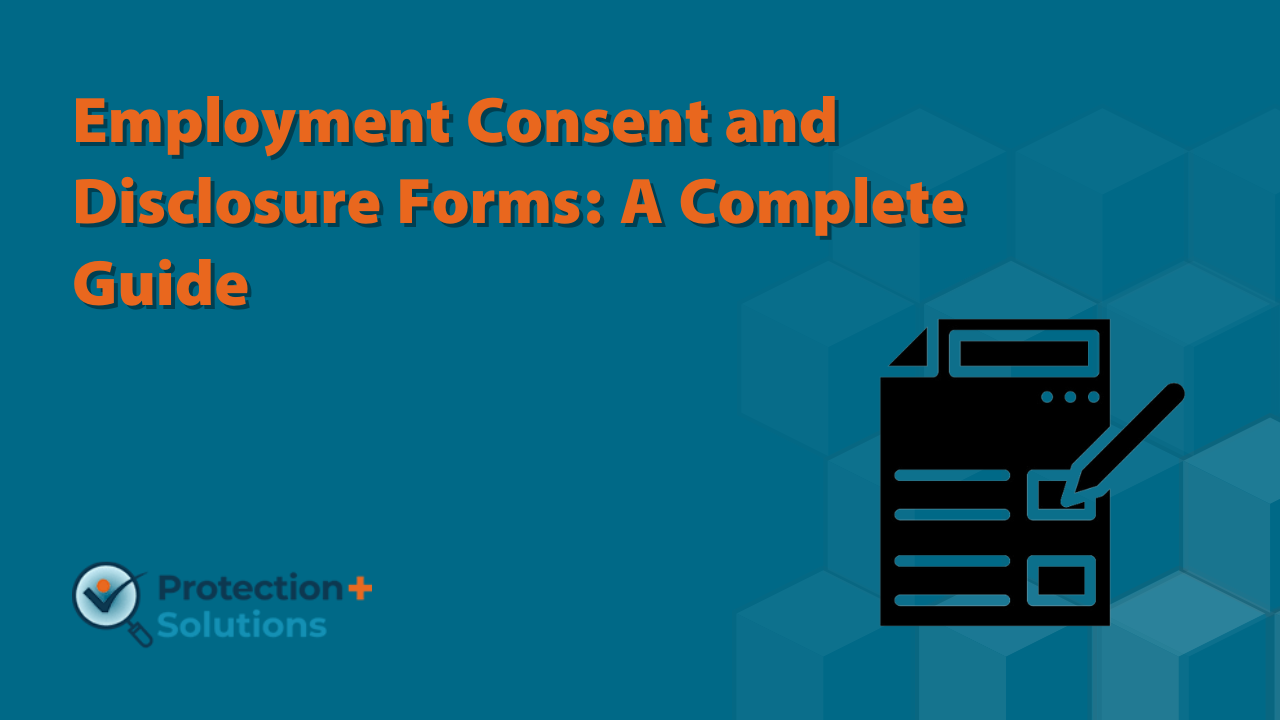Employment Consent and Disclosure Forms: A Complete Guide

When you start a new job, you’re usually handed a stack of paperwork. Among those papers are often employment consent and disclosure forms. These aren’t just bureaucratic hurdles they play a critical role in creating transparency and protecting both employers and employees.
Why These Forms Matter in Today’s Workplace
In today’s corporate world, where legal compliance and data privacy are hot topics, these forms help ensure that hiring and employment practices remain above board. They minimize risks, prevent misunderstandings, and set clear expectations from day one.
What Is an Employment Consent Form?
An employment consent form is a document that gives an employer permission to perform certain checks or access specific information about an employee or applicant.
Definition and Purpose
It ensures that the employer has legal approval to proceed with actions that involve personal or sensitive data.
Examples of Common Consent Scenarios
- Running a criminal background check
- Contacting previous employers
- Conducting drug or alcohol testing
- Using personal data for payroll or benefits
What Is an Employment Disclosure Form?
A disclosure form flips the situation. Instead of granting permission, the employee or applicant must reveal information that may impact employment decisions.
Definition and Purpose
Disclosure forms are meant to provide transparency. They give employers the details needed to make fair, informed hiring decisions.
When Disclosures Are Required
- Past criminal convictions
- Conflicts of interest
- Financial ties to competitors
- Previous legal disputes with employers
Key Differences Between Consent and Disclosure Forms
Think of consent as “You may check” and disclosure as “Here’s what I need to tell you.” While they serve different purposes, both are essential in building a trustworthy employment relationship.
Legal Importance of These Forms
Compliance with Labor Laws
In many countries, employers are legally obligated to obtain consent before accessing certain information or conducting checks.
Protection for Employers and Employees
- Employers avoid lawsuits by having documented permission.
- Employees protect their rights by clearly knowing what they’re agreeing to.
Types of Employment Consent Forms
Background Check Consent
This allows employers to verify education, work history, and any criminal records.
Drug and Alcohol Testing Consent
Common in industries like transportation, healthcare, and construction for safety reasons.
Medical Information Consent
Employers may need access to medical data for workplace accommodations or insurance purposes.
Use of Personal Data Consent
In today’s digital era, this is critical for GDPR and other data protection laws.
Types of Employment Disclosure Forms
Conflict of Interest Disclosure
Employees reveal personal relationships or financial ties that might affect business decisions.
Criminal Record Disclosure
Applicants must disclose convictions where legally required.
Previous Employment or Reference Disclosure
Applicants may provide detailed information about past jobs and references.
Financial Interest Disclosure
Essential in industries like banking and government to avoid corruption.
How Employers Use These Forms in Recruitment
During recruitment, these forms help employers make decisions based on verified facts, not assumptions. It also protects them from hiring risks like fraud or misrepresentation.
The Employee’s Perspective: Rights and Responsibilities
Employees must understand their rights, such as the right to refuse certain checks, but also their responsibility to provide truthful disclosures.
Confidentiality Concerns and Data Protection
Since these forms deal with sensitive information, employers must store and process data securely. Mismanagement can lead to lawsuits or hefty fines under data protection laws.
Common Mistakes Employers Make with Consent and Disclosure Forms
- Using overly complicated legal jargon
- Not explaining why the form is necessary
- Failing to update forms to meet current laws
- Storing forms carelessly
Best Practices for Drafting These Forms
Clear Language
Keep it simple. Avoid confusing employees with legalese.
Legal Review
Always have a legal expert review the forms.
Transparency
Explain what the data will be used for and how long it will be kept.
Digital vs. Paper Forms: What Works Best?
Digital forms are becoming the norm due to convenience and easier record-keeping. However, some organizations still prefer paper for compliance or tradition.
Global Variations: How Different Countries Handle These Forms
- U.S. – Strong focus on consent for background checks
- EU – GDPR makes data consent forms more detailed
- Asia – Practices vary widely, often influenced by local labor laws
The Role of HR in Managing Consent and Disclosure
HR departments are responsible for ensuring these forms are distributed, signed, stored, and updated in compliance with laws.
Future Trends: Electronic Signatures and AI in HR Compliance
With the rise of e-signatures and AI tools, the future of employment forms looks digital, fast, and more secure than ever.
Conclusion
Employment consent and disclosure forms may seem like routine paperwork, but they are the backbone of trust and compliance in the workplace. They protect both employers and employees, ensure transparency, and pave the way for smoother professional relationships.

